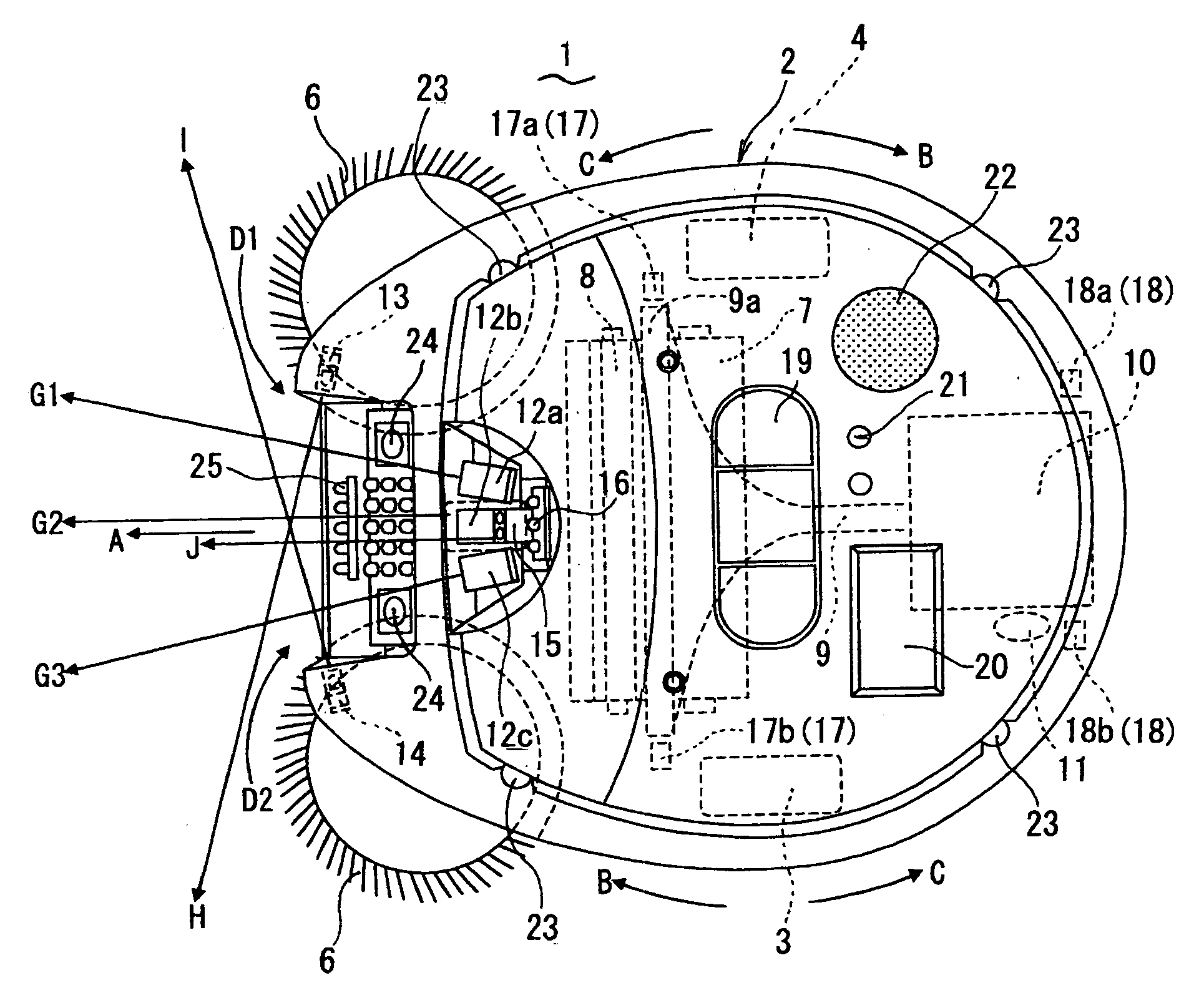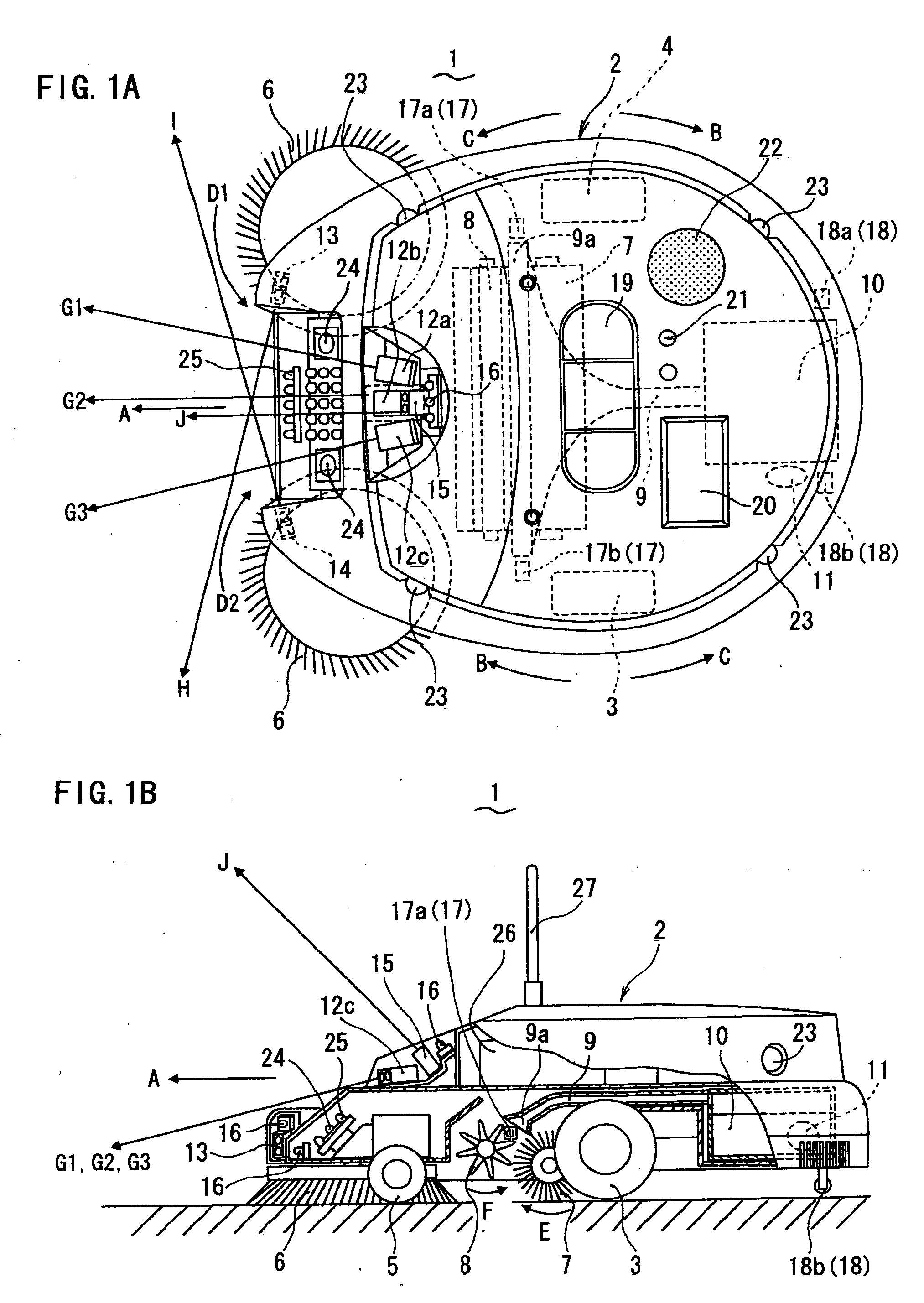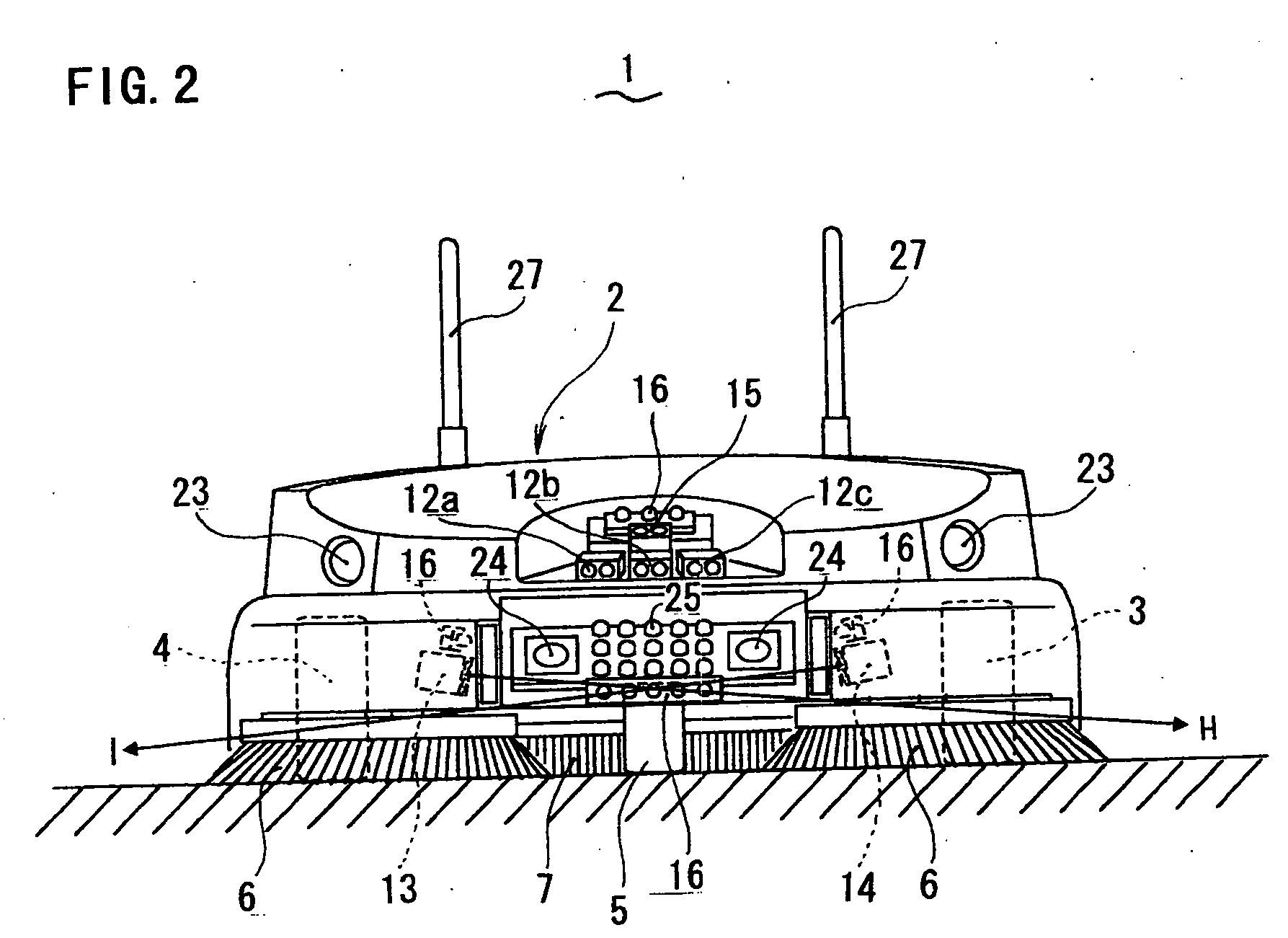Autonomous mobile robot cleaner
a robot cleaner and mobile technology, applied in the direction of cleaning action control, process and machine control, instruments, etc., can solve the problems of not being able to move more than once in the area of high dust concentration, not being able to solve the above problem, and not being able to collect dust in one movement of the robot cleaner
- Summary
- Abstract
- Description
- Claims
- Application Information
AI Technical Summary
Benefits of technology
Problems solved by technology
Method used
Image
Examples
Embodiment Construction
[0025] An embodiment of the present invention will be described hereinafter with reference to the annexed drawings. A schematic configuration of an autonomous mobile robot cleaner 1 (vacuum cleaner) according to the present embodiment is shown in FIG. 1A, FIG. 1B and FIG. 2. The autonomous mobile robot cleaner 1 is a device that autonomously moves on a floor of a room to clean the floor, and comprises: a main body 2; a left wheel 3, a right wheel 4 and a front wheel 5 to move the main body 2; and auxiliary brushes 6, a main brush 7, a roller 8, a suction nozzle 9, a dust box 10 and a suction fan 11 to collect dust, dirt and so on to be sucked or collected by a cleaner (hereafter collectively referred to simply as dust) e.g. dropped on the floor. The autonomous mobile robot cleaner 1 further comprises front sensors 12a, 12b and 12c, a left step sensor 13, a right step sensor 14, and a ceiling sensor 15 to detect obstacles around the main body 2 thereof, and sensor illumination lamps ...
PUM
 Login to View More
Login to View More Abstract
Description
Claims
Application Information
 Login to View More
Login to View More - R&D
- Intellectual Property
- Life Sciences
- Materials
- Tech Scout
- Unparalleled Data Quality
- Higher Quality Content
- 60% Fewer Hallucinations
Browse by: Latest US Patents, China's latest patents, Technical Efficacy Thesaurus, Application Domain, Technology Topic, Popular Technical Reports.
© 2025 PatSnap. All rights reserved.Legal|Privacy policy|Modern Slavery Act Transparency Statement|Sitemap|About US| Contact US: help@patsnap.com



